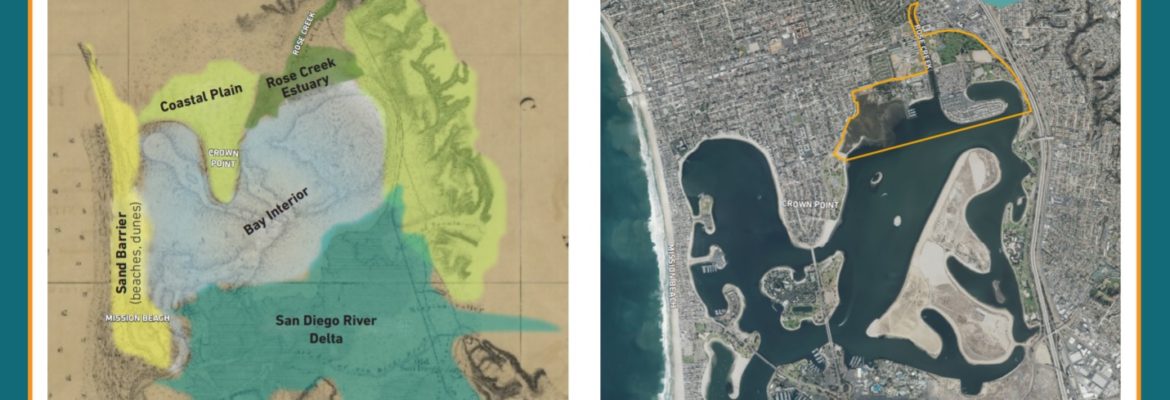Citizens Coordinate for Century 3 (C-3) hosted a meeting recently to highlight a new vision for the northeast corner of Mission Bay. Championed by San Diego’s Audubon Society, and supported by the University of California San Diego (UCSD) and a host of environmental organizations, the ReWild vision aims to restore up to 230 acres of the historic 4,000-acre complex of wetlands and habitat.
Event speakers included Andrew Meyer, director of conservation for the San Diego Audubon Society; Isabelle Kay, UCSD Natural Reserves manager; and Zoe Wynne, president of Mission Bay High School’s EcoClub and Climate Kids.
As Meyer and Kay explained to the audience, Mission Bay’s Kendall Frost Reserve and Northern Wildlife Preserve comprises 40 acres of tidal wetlands today, only one percent of the 4,000-acre complex that existed historically. Yet, the 40 acres are home to 154 species of native birds that frequent the marsh and depend on the marsh for survival.
ReWild is a feasibility study that looks at the science of restoring wetlands to Mission Bay and was completed to integrate into the City’s current effort to re-envision land uses in DeAnza Cove. In the final report, Audubon analyzed the costs and benefits of three alternatives, Wild, Wilder, and Wildest.
Scientists from UCSD and elsewhere have been conducting extensive research since the 1940s to study habitat and look at how the marsh can be restored. Of considerable concern is the likelihood of 5.5 feet of sea level rise. They see Audubon’s “Wildest” plan as the only alternative that will maintain sufficient wetlands in the face of sea level rise, wetlands that will improve water quality and help buffer the shoreline from sea level rise.
UCSD also has a vision to build a Wetlands Education and Research Center that would increase public access to the marsh, contribute to the blue economy of the region and build upon the marsh’s long history of inspiring students. Mission Bay High School student Zoe Wynn described how the opportunity to do real research in the Kendall Frost Marsh ignited her passion for science, which she will pursue as an Environmental Science and Policy major at UC Santa Cruz in September.
Attendees of the breakfast meeting listened to presentations outlining the vision, and then broke into small groups to discuss the physical, biological, social and planning connections that are needed to restore Mission Bay’s natural environment so that it achieves its potential of being a regional asset and a world class resource. C3 will follow up by advocating for the inclusion of ReWild in the City’s DeAnza Cove Amendment to the long-term Mission Bay Master Plan, last updated in 1993. The DeAnza Cove Amendment project is a “three-year comprehensive outreach and planning program to reimagine, repurpose, and revitalize the project area,” as described on the City’s project website.
About C-3
Since 1961, Citizens Coordinate for Century 3 (C-3) has sought and successfully advocated for the highest standards in urban design, community planning and access to public open space. As a member-supported, non-profit organization, we bring together residents and professionals to jointly craft solutions to the challenges we face in our city and region. http://c3sandiego.org.

